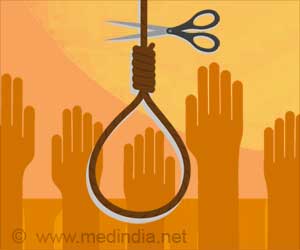
‘Centers for Disease Control and Prevention reveals female youth are experiencing a greater percent increase in suicide rates compared to males.’
Tweet it Now
Suicide is the second leading cause of death among youth aged 10-19 years in the U.S., with rates historically higher in males than females. Donna Ruch, PhD, a post-doctoral researcher in the Center for Suicide Prevention and Research at the Research Institute at Nationwide Children's Hospital, examined these trends by investigating suicide rates among U.S. youth aged 10-19 years from 1975 through 2016.
The researchers found that following a downward trend in suicide rates for both sexes in the early 1990s, suicide rates increased for both sexes since 2007, but suicide rates for females increased more. There was a significant and disproportionate increase in suicide rates for females relative to males, with the largest percentage increase in younger females. These trends were observed across all regions of the country.
"Overall, we found a disproportionate increase in female youth suicide rates compared to males, resulting in a narrowing of the gap between male and female suicide rates," said Dr. Ruch.
When the researchers looked at the data by method, they found the rates of female suicides by hanging or suffocation are approaching those of males. This is especially troubling in light of the gender paradox in suicidal behavior, according to Jeff Bridge, PhD, director of the Center for Suicide Prevention and Research at Nationwide Children's and co-author of the new study. Dr. Bridge said females have higher rates of non-fatal suicidal behavior, such as thinking about and attempting suicide, but more males die by suicide than females.
Advertisement
The researchers called for future work to examine whether there are gender-specific risk factors that have changed in recent years and how these determinants can inform intervention. "From a public health perspective, in terms of suicide prevention strategies, our findings reiterate the importance of not only addressing developmental needs but also taking gender into account," said Dr. Ruch.
Advertisement
"Parents need to be aware of the warning signs of suicide, which include a child making suicidal statements, being unhappy for an extended period, withdrawing from friends or school activities or being increasingly aggressive or irritable," he said. "If parents observe these warning signs in their child, they should consider taking the child to see a mental health professional."
Source-Eurekalert










